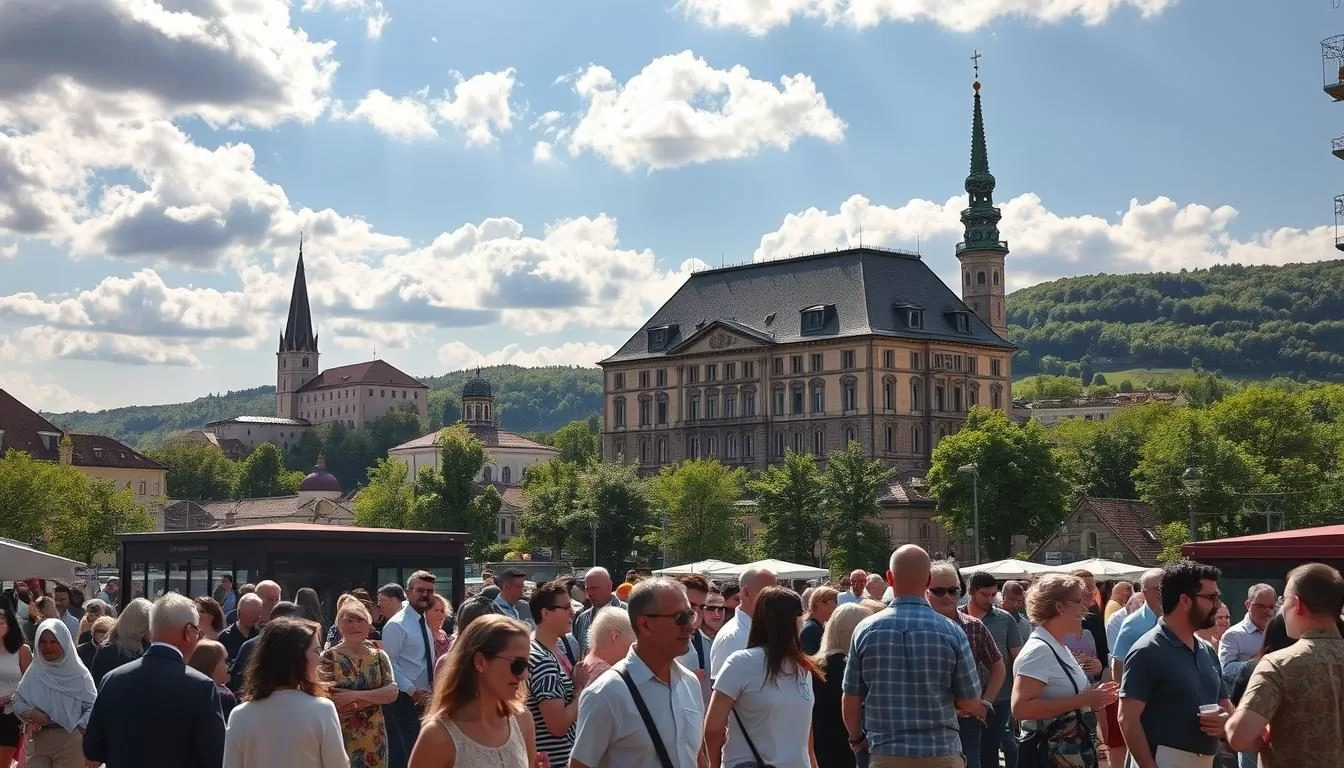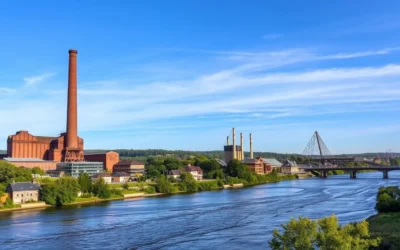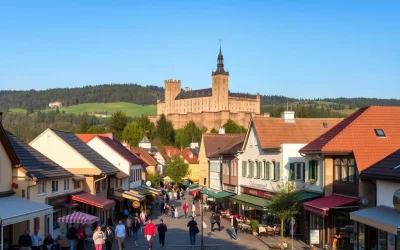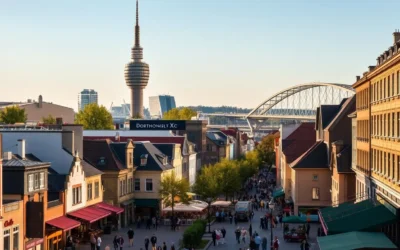✓ Accommodations✓ Flights✓ Rental Cars
Welcome to Hesse, a vibrant state known for its rich cultural heritage and dynamic cities. Located in the heart of Europe, this region is home to bustling urban centers like Frankfurt and Wiesbaden. These cities are not just economic hubs but also cultural melting pots, shaping the identity of the area.
The language landscape here is as diverse as its history. While the primary language is widely recognized, regional dialects add unique flavors to everyday communication. This blend of voices reflects the state’s evolving identity.
In this article, you’ll explore how Hesse’s city life and regional influences shape its linguistic practices. From historical roots to modern trends, we’ll uncover the fascinating story of language in this part of the country.
Overview of Hesse’s Cultural and Linguistic Heritage
Step into a region where history and culture intertwine to create a unique identity. This area has been shaped by centuries of tradition, innovation, and diverse influences. From ancient tribes to modern-day developments, every part of its story adds depth to its vibrant heritage.
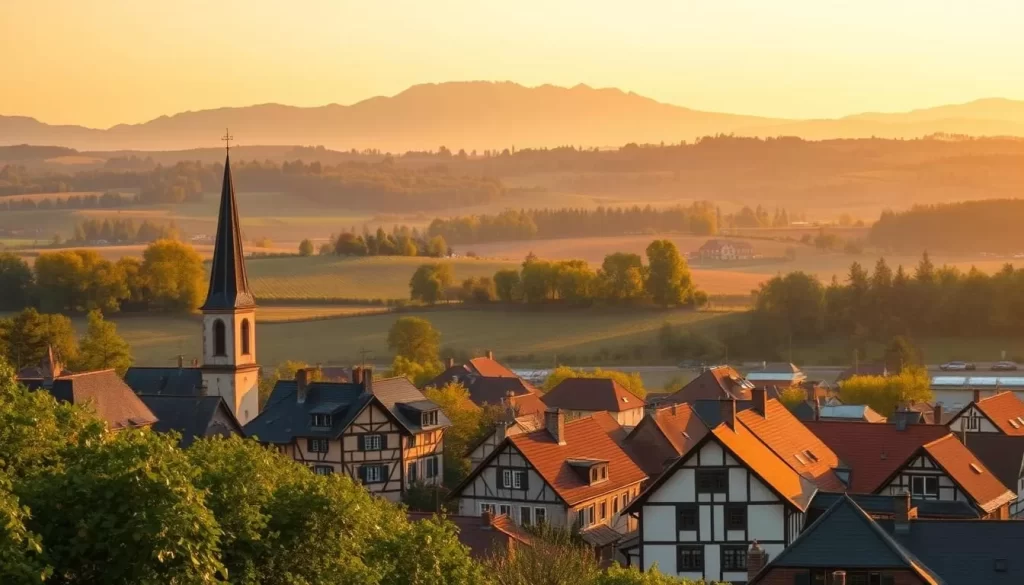
Geographical and Historical Context
The region’s geography plays a significant role in its cultural evolution. Nestled in the heart of Europe, it features rolling hills, dense forests, and picturesque valleys. These natural landmarks have been a part of its identity for centuries.
Historically, the area was home to the Chatti tribe, an ancient group that laid the foundation for its early development. Over the years, it became a key part of the Holy Roman Empire and later experienced significant changes during the Napoleonic period. Each year brought new influences, shaping its unique character.
The Role of Hesse in Shaping Regional Identity
This region has always been a melting pot of cultures and ideas. Its strategic location made it a crossroads for trade, politics, and cultural exchange. This blend of influences is evident in its language, traditions, and way of life.
From the Rheingau’s wine-growing heritage to the Kellerwald-Edersee National Park’s natural beauty, every part of the region tells a story. These elements, combined with its rich history, continue to shape its identity today. Whether you’re exploring its historical landmarks or enjoying its modern cities, you’ll find a place where the past and present coexist harmoniously.
Hesse, Germany: Official and widely spoken languages
Discover the linguistic landscape that defines communication in this region. The official language policies ensure clarity and consistency, while diverse dialects add richness to everyday interactions. This balance reflects the area’s cultural depth and historical roots.
Understanding Official Language Policies
Standard German serves as the primary language for education, media, and official communication. However, regional dialects like Low German continue to thrive, especially among older and rural speakers. These dialects are a vital part of the local identity.
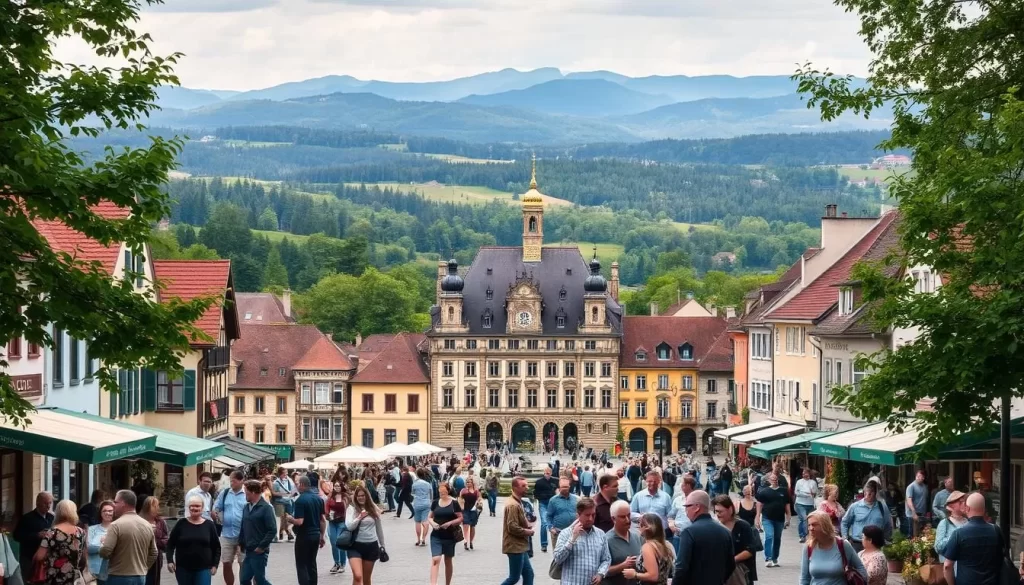
The coexistence of standard German and dialects is seamless. In schools, students learn standard German, but many grow up speaking a regional dialect at home. This dual approach preserves tradition while ensuring clear communication across the population.
Low German, in particular, holds a special place in the region’s heritage. It’s often used in rural areas and by older generations, keeping the dialect alive. Efforts to document and promote it ensure its survival for future speakers.
Language policies also influence local media. Radio stations and newspapers often feature content in both standard German and regional dialects. This approach fosters inclusivity and celebrates the area’s linguistic diversity.
With a population of over six million, the region’s language practices reflect its dynamic character. Whether in bustling cities or quiet villages, the blend of standard German and dialects creates a unique linguistic tapestry.
Exploring Regional Dialects and Variations
Dive into the fascinating world of regional dialects that shape everyday life in this area. From bustling cities to quiet villages, the way people speak reflects a blend of tradition and modernity. Understanding these variations offers a deeper appreciation of the region’s cultural richness.
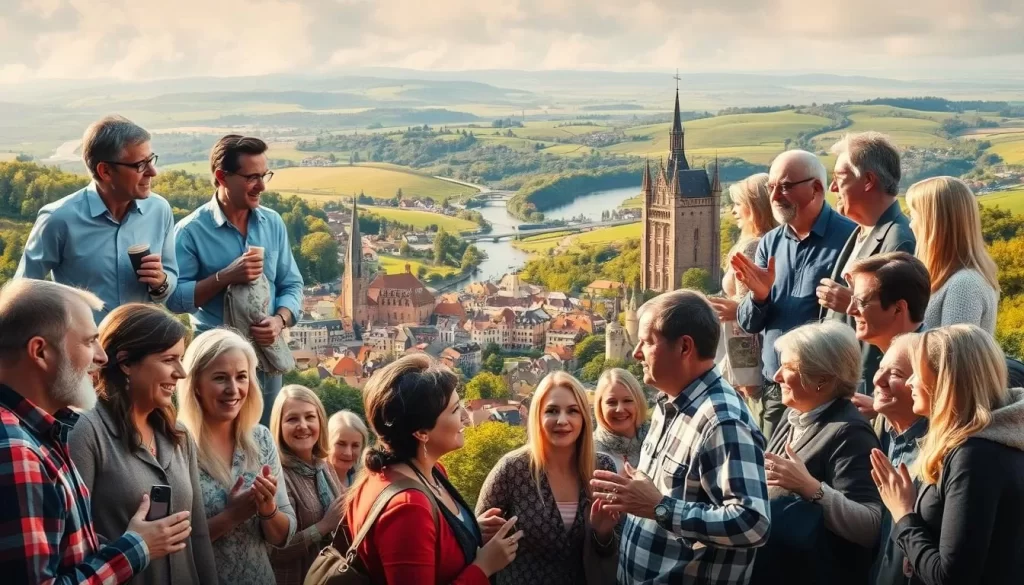
High German, Low German, and Beyond
High German serves as the standard for formal communication, education, and media. It’s what students learn in schools and use in professional settings. However, Low German and other dialects add a unique flavor to everyday conversations, especially in rural areas.
For example, older generations often prefer Low German, keeping the dialect alive. This balance between standard and regional forms ensures clear communication while preserving cultural heritage. “Dialects are like windows into the past,” says a local educator.
Diverse Dialect Groups in Urban and Rural Areas
In urban centers, High German dominates due to its role in education and business. Yet, rural areas often embrace dialects like Low German, which are deeply rooted in local traditions. This contrast highlights the region’s linguistic diversity.
Students and educators navigate this dual system effortlessly. In classrooms, they focus on High German, but at home, many switch to their regional dialect. This approach fosters inclusivity and keeps traditions alive.
Public institutions and media also play a role. Radio programs and local newspapers often feature content in both High German and dialects. This effort ensures that everyone feels represented and connected.
The result is a vibrant linguistic landscape where tradition meets modernity. Whether you’re in a city or a village, you’ll hear a mix of voices that tell the story of this dynamic region.
Impact of Language on Local Education and Culture
Language plays a key role in shaping education and cultural identity in this region. It influences how students learn, how communities connect, and how traditions are preserved. From schools to cultural events, the way people communicate reflects a blend of history and modernity.
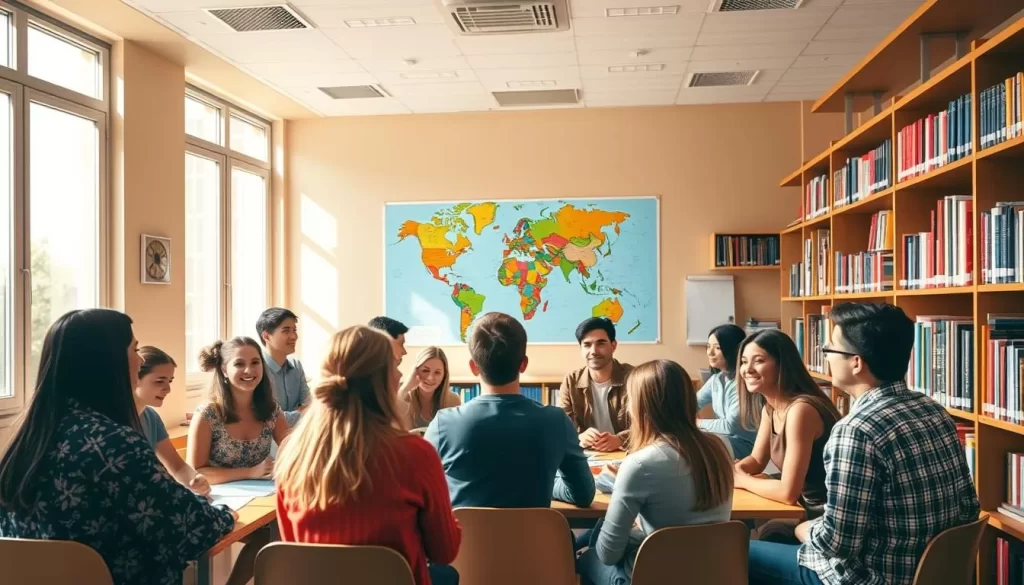
Language in Schools and Universities
Educational institutions here balance standard German with regional dialects. Students learn standard German in classrooms, but many grow up speaking dialects at home. This dual approach ensures clear communication while preserving local traditions.
Programs focusing on language learning are common. For example, bilingual education initiatives have gained popularity over time. These programs help students appreciate both modern and historical language practices.
The number of students enrolled in such programs continues to grow. This reflects a commitment to maintaining linguistic diversity while preparing students for a globalized world.
Cultural events also highlight the importance of language. Festivals, theater performances, and community gatherings often feature both standard German and dialects. This blend enriches the local culture and fosters a sense of pride.
- Schools teach standard German but encourage dialect use at home.
- Bilingual programs bridge modern and traditional language practices.
- Cultural events celebrate linguistic diversity, enhancing community bonds.
Over time, language education has shaped the region’s identity. It has influenced everything from curriculum design to community activities. This evolution ensures that traditions are honored while embracing new opportunities.
Language is more than just a tool for communication—it’s a cornerstone of culture and education. By valuing both standard and regional forms, this region continues to thrive as a vibrant, inclusive community.
Historical Evolution of Languages in Hesse
The story of language in this region is a journey through time. From ancient tribes to modern standardization, each century has left its mark on how people communicate. Understanding this evolution helps you appreciate the linguistic richness you see today.
From the Chatti to Standard German
It all began with the Chatti tribe, an ancient family of people who shaped early dialects. Their language laid the foundation for what would later evolve into modern German. Over the centuries, this region became a crossroads for cultural exchange, influencing its linguistic development.
By the Middle Ages, regional dialects began to emerge. These were shaped by trade, politics, and the movement of people. Each century brought new influences, from the Holy Roman Empire to the Napoleonic era. These events played a key role in shaping the language you hear today.
Key figures also left their mark. For example, Martin Luther’s translation of the Bible in the 16th century helped standardize German. His work made the language more accessible to the average person, bridging regional differences.
“Language is the roadmap of a culture. It tells you where its people came from and where they are going.”
In the 19th century, efforts to unify the region politically also influenced language. Standard German became the norm for education and official communication. Yet, regional dialects persisted, especially in rural areas, preserving a connection to the past.
Today, this blend of history and modernity defines the linguistic landscape. From the Chatti to Standard German, each century has contributed to the way people speak. This evolution is a testament to the region’s resilience and adaptability.
To learn more about the broader history of the German language, visit this detailed resource.
Modern Trends in Language Use and Immigrant Influences
In today’s interconnected world, language use in this region reflects a blend of tradition and modernity. Globalization and digital communication have introduced new elements, reshaping how people interact. From social media to international trade, these trends are influencing everyday conversations.
Immigrant populations have also played a significant role in diversifying the linguistic landscape. Languages like Turkish, Polish, and Russian are now commonly heard in public places. This integration enriches the cultural fabric while challenging traditional norms.
Changing demographics are evident in schools, workplaces, and community events. Younger generations often mix standard German with immigrant languages, creating a unique hybrid. This dynamic shift reflects the region’s adaptability in a multilingual world.
- Globalization introduces new vocabulary and communication styles.
- Immigrant languages add diversity to everyday interactions.
- Public places showcase a blend of traditional and modern language use.
Efforts to maintain traditional dialects alongside new influences highlight the region’s commitment to cultural preservation. Programs promoting bilingual education and community events celebrating linguistic diversity are key to this balance.
As the official language continues to evolve, it remains a cornerstone of identity. Embracing both old and new, this region thrives as a vibrant, inclusive place in today’s globalized world.
Conclusion
This region stands as a testament to the power of language in shaping identity. From its rich tapestry of dialects to its evolving linguistic policies, it remains a home for diverse voices. The blend of traditional dialects with modern influences creates a unique cultural landscape.
Immigrant communities have played a significant role in enriching this diversity. Their contributions have introduced new languages and cultural expressions, making the region a vibrant hub of communication. This fusion of old and new ensures that the area continues to thrive as a dynamic, inclusive home for all.
As you explore this region, you’ll discover how its widely spoken languages and dialects reflect its history and future. Whether in bustling cities or quiet villages, the way people speak tells a story of resilience and adaptability. Take the time to appreciate this linguistic richness—it’s a journey worth experiencing.
The above is subject to change.
Check back often to TRAVEL.COM for the latest travel tips and deals.
